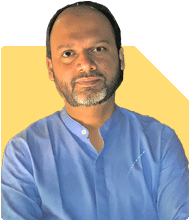Retiree in Metro City: Is my 50% Travel/Trek Budget Sensible?
Samraat Jadhav |2171 Answers |Ask -Follow
Stock Market Expert - Answered on Jul 26, 2024
He is a SEBI-registered investment and research analyst and has over 18 years of experience in managing high-end portfolios.
A management graduate from XLRI-Jamshedpur, Jadhav specialises in portfolio management, investment banking, financial planning, derivatives, equities and capital markets.... more

I do not own a house; living in heart of metro city for over 50 years; I am retired, and with no family or financial (loan/EMI) commitment. I do not prefer retirement or living assist pay home available for senior citizen where I may lose my independance and choice of my life. I have given declaration for donation of organs after my death; also I have declared donation of my body to medical college to save creamation expenses and procedure, by not disturbing the others Being a self dependant, I allocate my income, 20% for rent; 15% for food expenses 10% for medical emergency (I have no health issues, not even a diabetic and blood pressure) though my annual medical expenses is ZERO. 25% for travel/Trek (I fond of travelling and exposing to trekking spot like travelling to Himalayas - Rishikesh every year for the laslt 27 years) 15% for local conveyance (like petrol etc)5% for emergency; 5% for insurance premium commitments; 5% for others including donation and pooja etc. anything unutlised is for saving where I donot require to accumulate saving or investment , as it does not require for me to leave a legacy. Please advise, do I need to re-allocate the ratio; all the time we are asking for income and investment, and I am placing this question on expenditure. Though I can understand the expenditure pattern changes according to the taste of the people; and life style; we do not have thumb rule and I request you to kindly suggest if anything is missed out or re-allocate the percentage.
From the allocation side I would suggest you to keep changing your food allocation ratio as this is linked with Inflation you can change this from 15% to 20%. The leftover should go in savings.
You may like to see similar questions and answers below
Ramalingam Kalirajan |7550 Answers |Ask -Follow
Mutual Funds, Financial Planning Expert - Answered on May 09, 2024
Jinal Mehta |95 Answers |Ask -Follow
Financial Planner - Answered on Jun 24, 2024
Ramalingam Kalirajan |7550 Answers |Ask -Follow
Mutual Funds, Financial Planning Expert - Answered on Sep 02, 2024
Ramalingam Kalirajan |7550 Answers |Ask -Follow
Mutual Funds, Financial Planning Expert - Answered on Nov 26, 2024
Anu Krishna |1442 Answers |Ask -Follow
Relationships Expert, Mind Coach - Answered on Jan 19, 2025
Anu Krishna |1442 Answers |Ask -Follow
Relationships Expert, Mind Coach - Answered on Jan 19, 2025
Anu Krishna |1442 Answers |Ask -Follow
Relationships Expert, Mind Coach - Answered on Jan 19, 2025
Anu Krishna |1442 Answers |Ask -Follow
Relationships Expert, Mind Coach - Answered on Jan 19, 2025
Anu Krishna |1442 Answers |Ask -Follow
Relationships Expert, Mind Coach - Answered on Jan 19, 2025
Mayank Chandel |1965 Answers |Ask -Follow
IIT-JEE, NEET-UG, SAT, CLAT, CA, CS Exam Expert - Answered on Jan 19, 2025
Mayank Chandel |1965 Answers |Ask -Follow
IIT-JEE, NEET-UG, SAT, CLAT, CA, CS Exam Expert - Answered on Jan 19, 2025
Nayagam P P |4059 Answers |Ask -Follow
Career Counsellor - Answered on Jan 19, 2025
Ramalingam Kalirajan |7550 Answers |Ask -Follow
Mutual Funds, Financial Planning Expert - Answered on Jan 19, 2025
Ramalingam Kalirajan |7550 Answers |Ask -Follow
Mutual Funds, Financial Planning Expert - Answered on Jan 19, 2025













.jpg)












